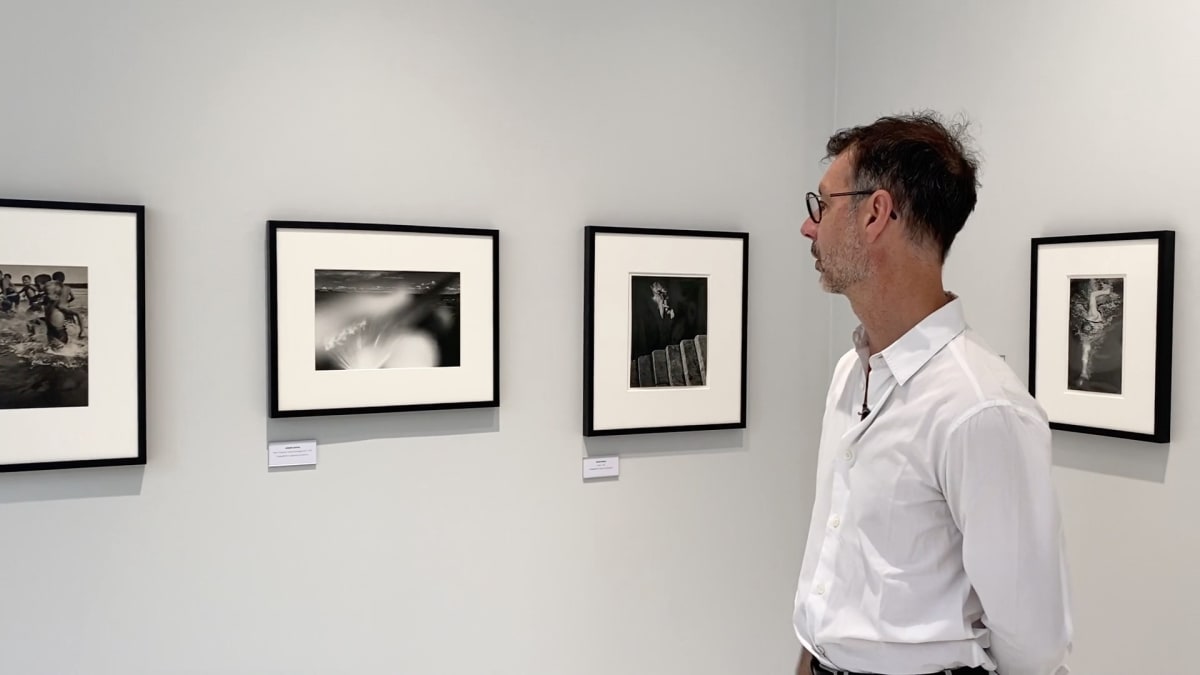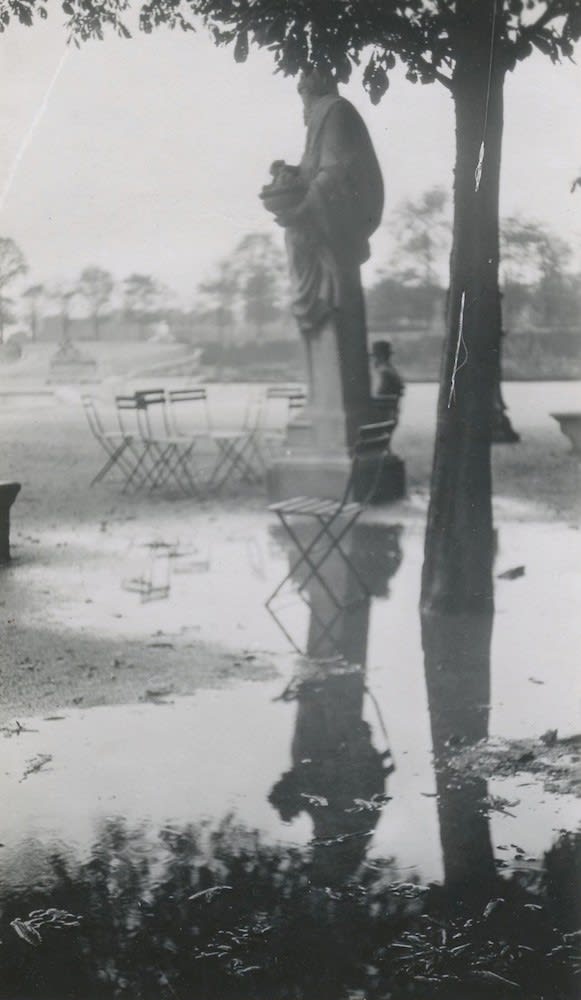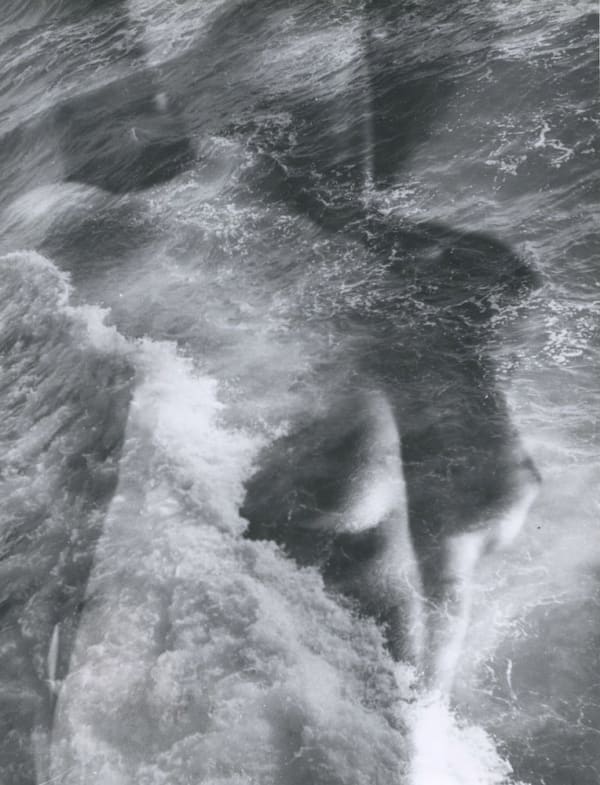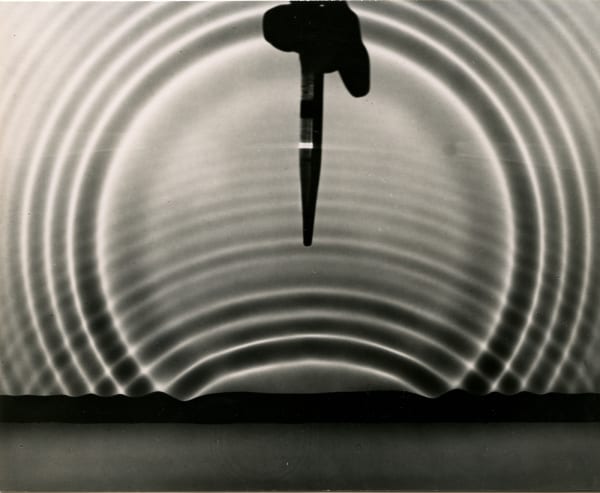The Shapes of Water: Group show
Featuring works by:
Berenice Abbott, Pierre Boucher, Roger Catherineau, Harold Edgerton, Emeric Feher, Jean-Claude Gautrand, Joseph Jachna, Pierre Jamet, Sid Kaplan, Peter Keetman, André Kertész, François Kollar, Bogdan Konopka, Rainer Leitzgen, Dora Maar, Daniel Masclet, Ray K. Metzker, Elfriede Stegemeyer, André Steiner, Claude Tolmer, Raoul Ubac, Willy Zielke and René Zuber
Feared for many centuries, water became a symbol of cleanliness in the 19th century, then of health (ocean bathing), and finally, in the 20th century, of pleasure and freedom. Les Douches la galerie, which was once a public shower that closed in 1977, pays homage to the element that adorned its walls prior to photography. Bringing together different artists and trends in 20th-century photography seemed like a return… to the source.
The gallery will be closed from July 30 to August 21, 2023
-
 Sid Kaplan, New York City, 1955
Sid Kaplan, New York City, 1955 -
 Dora Maar, Untitled (chair in flooded field), fin des années 1920
Dora Maar, Untitled (chair in flooded field), fin des années 1920 -
 René Zuber, La photo révélée, Marseille, 1930
René Zuber, La photo révélée, Marseille, 1930 -
 Rainer Leitzgen, Sans titre (#1), série Bimini, 1992
Rainer Leitzgen, Sans titre (#1), série Bimini, 1992
A source of inspiration for poets, at the heart of life itself, water joins bodies and contents; with no fixed form, it escapes unequivocal representation.
Whether it be a sea, a lake, a river, a stream, a pool, the rain, a droplet, a puddle or fountain, or even when it is simply coming out of a tap, water is a part of our daily life, but it is ever-changing, impalpable; it slips over bodies, detaches, evaporates. It is elusive, a water-clock, a symbol of the passage of time. Its ability to capture light, and diffract it, to reflect the world, has made it a favourite subject of study for photographers, complex and rich in possibilities. While 19th-century photographers often limited it to landscapes, 20th-century photographers made it a feature of leisure, cleanliness, still lifes, science, surrealism and figurative abstraction.
It is a substance with a thousand reflections, its appearance constantly changing; there is no single representation of water. It has as many faces as it has reflections. What particularly fascinates photographers is above all its ability to play with light. It was an accompaniment to many compositions, becoming on occasion the principal subject.
In October 1938, the monthly pamphlet Mieux vivre, which ‘each month brings together the most beautiful photographic documents to have appeared, on a topic selected among the loveliest in our existence’, published a work on water. Streams and brooks are flanked by rain and swimming. In his introduction, the novelist Louis Guilloux (1899-1980) remarked that ‘no other element is as lively, no other element lends itself better to joy, nor gives as much…. Water, when it becomes an expanse, reveals other secrets, its alliance with the sun’s fire, its complicity with the wind, and so many others that perhaps lie only within us’.1
Among the photographs we have selected, those by André Steiner (1901-1978) stand out: his underwater swimmers, where bodies and water blend to shape a single figure in a formal, yet sensual, osmosis. Often linked to youth – eg the fountain of youth – water is a companion to youth, tied to its games, glorifying the vitality and playfulness of children, as seen in the photographs of François Kollar (1904-1979), Pierre Jamet (1910-1920), Sid Kaplan (1938-) and Jean-Claude Gautrand (1932-2019).
For Dora Maar (1907-1997), Emeric Feher(1904-1966) and Ray Metzker (1931-2014), wateris the mirror of the world. In the form of a puddle, water plays with the world’s appearances where photos capture the double vision of a single reality, showing us all the more that everything is a question of point of view.
The task of representing water in painting, especially still life, is a challenge. Its glass-like transparency, in other words its visual emptiness, commands all the artist’s skill to reveal what cannot be seen. Everything becomes a question of reflections, shadows, composition and controlled light, a challenge skillfully taken up by three eminent photographers in the 1930s, each with his own aesthetic: ebbing pictorialism from Français Daniel Masclet (1892-1969), the German Elfriede Stegmeyer’s (1908-1988) Bauhaus modernity, and new objectivity from the German Willy Zielke (1902-1989).
Pierre Boucher uses mythology to approach the subject: he brings it to life through the female spirit Undine2 in an enigmatic surrealistic photo-montage that he handles with great deftness. The Surrealist Raoul Ubac (1910-1985), who photographed stone, creates a unique image of the world of waters, trying to ‘disintegrate the latent form beneath the calm photographic surface’3. A few years later, he continues to search for ‘the unconscious image’, but now uses fire, heating and deforming the negative.
For artists of Subjektive Fotografie, faithful representation is less important than the artist’s vision. The German Peter Keetman (1916-2005), one of the founders of the avant-garde group Fotoform4, was one of the eminent photographers of the trend. His emblematic Spiegelnde Tropfen (Reflected Droplets) from 1958 is a repeated image of water droplets that act as so many mirrors of the world, as if it were impossible to produce a single representation of it.
In the 1930s, the American photographer Harold Edgerton (1903-1990), a scientist at the Massachusetts Institute of Technology (MIT), took a scientific approach, penetrating the mysteries of water through devices he developed to capture what the eye could not perceive. His compatriot Berenice Abbott (1898-1991) also worked at MIT, in the 1950s, where she studied wave propagation, producing highly poetic abstract photographs. She shows us calm and gentleness, where her predecessor focused on energy and chaos.
The delicate pinholes that Bogdan Konopka (1953-2019) made around mountain streams transform their appearance. Clear waters shimmer through the pauses that the photographic procedure imposes, turning them into luminous streaks that cut through the darkness of the underbrush and form strange, dreamlike landscapes.
The contemporary work of the German photographer Rainer Leitzgen (1963-) is also clearly of a piece with the others. He does not take water as a subject, but as a filter, a transparent screen, a surface that provides a distorted representation of the real world, allowing us to glimpse another reality. Faces and bodies seem to dissolve on paper like ink. We lose our sense of space and scale in this other world. His photographs show us that beauty does not lie in a clear representation of the real but in a strange, disturbing and fascinating personal vision.
1. ‘Mieux Vivre, L’Eau’, Introduction by Louis Guilloux, Revue Mensuelle (Bergerac: Société Publirex, 1938).
2. According to the Renaissance physician Paracelsus, each of the four classical elements – earth, water, air and fire – is inhabited by different categories of elemental spirits, liminal creatures that share our world: gnomes, undines, sylphs and salamanders respectively. He describes these elemental spirits as the ‘invisible, spiritual counterparts of visible Nature ... many resembling human beings in shape, and inhabiting worlds of their own, unknown to man because his undeveloped senses were incapable of functioning beyond the limitations of the grosser elements’.
3. Raoul Ubac, Photographie, Christian Bouqueret (Paris: Léo Scheer), 169.
4. Fotoform was an avant-garde photography group founded in 1949 by six young German photographers: Siegfriede Lauterwasser, Peter Keetman, Wolfgang Reisewitz, Toni Schneiders, Ludwig Windstrosser and Otto Steinert. Steinert mounted the three important exhibitions that formed Subjektive Fotografie in the 1950s, selecting artists from across Europe who espoused the new approach to photography.





















